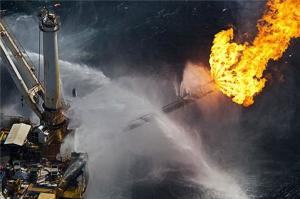
From: Yahoo News
By Dahr Jamail
New Orleans, United States of America - Peter Frizzell never thought his watersports off the coast of Florida would destroy his health.
"After sea kayaking after BP's spill happened, I was sitting at my
desk and started coughing up loads of blood," Frizzell, an avid
outdoorsman, told Al Jazeera. "My doctor ran a scope down to the top of
my lungs and said my bronchi were full of blood."
Frizzell's medical records bear out that he was exposed to toxic chemicals, and he is far from alone.
Since the spill began in April 2010, Al Jazeera has interviewed
hundreds of coastal residents, fishermen, and oil cleanup workers whose
medical records, like Frizzell's, document toxic chemical exposure that
they blame on BP's oil and the toxic chemical dispersants the oil giant
used on the spill.
The US Center for Disease Control and Prevention lists the toxic
components commonly found in chemicals in crude oil, and several of
these chemicals have been found in the blood of people living in the
impact zone of BP's disaster.
Several toxicologists agree, and now one accuses both BP and the US
Environmental Protection Agency of knowingly placing people in harms way
since they both had prior knowledge of the harmful effects of the oil
and dispersants.
"BP told the public that Corexit was 'as harmless as Dawn dishwashing
liquid'," Dr Susan Shaw, of the State University of New York, told Al
Jazeera. "But BP and the EPA clearly knew about the toxicity of the
Corexit dispersants long before this spill."
Shaw, a toxicologist in the university's School of Public Health, has
been studying the health effects of chemical exposure for 30 years. She
is also the president and founder of the Marine Environmental Research
Institute, and explained that BP's Material Safety Data Sheets for
Corexit warned that the dispersant posed high and immediate human health
hazards.
"Five of the Corexit ingredients are linked to cancer, 33 are
associated with skin irritation from rashes to burns, 33 are linked to
eye irritation, 11 are or are suspected of being potential respiratory
toxins or irritants, and 10 are suspected kidney toxins," she added.
"BP's own testing found that workers were exposed to a possible human
carcinogen from the dispersant.
"We predicted with certainty the widespread human health crisis we are seeing in the Gulf today," Shaw said.
No comments:
Post a Comment